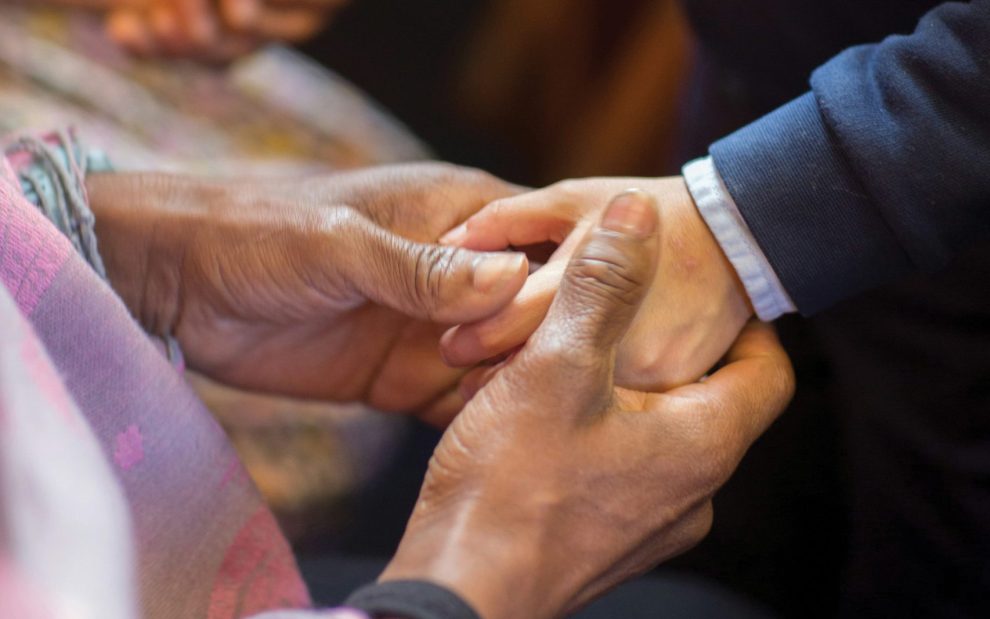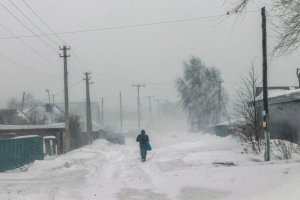“Peace be with you all.” With this simple greeting, Pope Leo XIV introduced himself to the world from the balcony of St. Peter’s Basilica.
For Catholics, peace is more than a sentiment—it shapes the rhythm of our worship. We begin by seeking peace in prayer, and Mass ends with a charge to “go in peace.” Peace is, at once, a prayer, a promise, and a practice. For Christians, the promise of God’s peace is where we begin. “Peace is first and foremost a gift. It is the first gift of Christ,” Pope Leo XIV told the Vatican Diplomatic Corps during an audience in May. But, he continued, “it is an active and demanding gift. It engages and challenges each of us, regardless of our cultural background or religious affiliation, demanding first of all that we work on ourselves.”
Disarmament and multilateral diplomacy are essential to building peace in the world, but peace begins in our own hearts and in our speech. “For words too, not only weapons, can wound and even kill,” Pope Leo told the Diplomatic Corps. Peace is both gift and task. In response to God’s gift, we are each called to become peacemakers both within ourselves and in our communities. “Blessed are the peacemakers, for they will be called children of God” (Matt. 5:9).
Jesus calls us to be peacemakers, but what does that truly mean? The promise of God’s peace and of the kingdom of God animate both our prayer and our practice, sustaining us in hope. Jesuit Father Yiu Sing Lucas Chan suggests that when we read the Beatitudes “as a ladder or as a challenge to Christians to become better over the course of time,” we begin to see that peacemaking is not a one-time achievement, but an ongoing process.
In his book The Ten Commandments and the Beatitudes: Biblical Studies and Ethics for Real Life (Rowman & Littlefield), Chan writes that the Beatitude addressing peacemakers “is primarily concerned with interpersonal relationships that demand reconciliation and forgiveness.” Peacemaking, then, is not abstract; it is a discipline we must practice in all our relationships.
A Jesuit from Hong Kong and my classmate at Boston College, Chan was a brilliant theologian whose life was cut tragically short in 2015, just before his 47th birthday. His work wove together the best of biblical scholarship and the Catholic moral tradition, always with a keen eye on the everyday challenges of Christian discipleship. While our attention often turns to politics, war, and large-scale conflict, Chan’s work reminds us that the first step is more personal: “to acquire peace in our own hearts.” From there, we are called to cultivate peace in all our relationships.
Peaceful communities are not passive; they are active, engaged, and built on relationships rooted in justice and compassion. Yet all people are flawed and finite. It is in the promise of God’s peace that we find the confidence and hope to keep striving to be peacemakers.
Justice and truth go hand in hand with peacemaking. “Working for peace requires acting justly,” Pope Leo said in his address—both in response to broad social issues and within our personal relationships. Chan echoes this conviction: “Peacemaking is the responsibility of all Christians, and justice is the basis for authentic peacemaking. I believe that each of us can do something to promote peace in our contemporary world.”
Alongside justice, Pope Leo names truth as a requirement for peace. In an era of fake news, virtual reality, and vague communication, he warns, “It is difficult to build authentic relationships.” For Chan, the antidote is clear: Building peace requires dialogue and mutual respect.
Peacemaking, notes Chan, is woven throughout our liturgy. One such moment is the sign of peace, which, according to Chan, “expresses our willingness to reconcile with and make peace with other members of the community.” Yet in our fractured world, does the sign of peace still function that way? What once felt like a warm and familiar ritual now often feels, to me, tinged with tension and awkwardness. The gesture remains, but its meaning feels less certain.
Building peacemaking into our daily lives—and into our local communities—begins with attentiveness to peace at Mass, when we gather to pray. But how do we nurture practices that preserve the sign of peace as a prayerful gesture of connection, especially across our many differences? How do we recover this moment as one that draws us into deeper communion, reminding us that we are part of a single body of faith?
Perhaps it begins with making space for grace in the personal—in silence, in prayer, and in small acts of mercy. When peace takes root in these intimate places, then perhaps the wider practices for social and political peace will seem possible.
This article also appears in the August 2025 issue of U.S. Catholic (Vol. 90, No. 8, pages 40-41). Click here to subscribe to the magazine.
Image: Unsplash/The Good Funeral Guide













Add comment